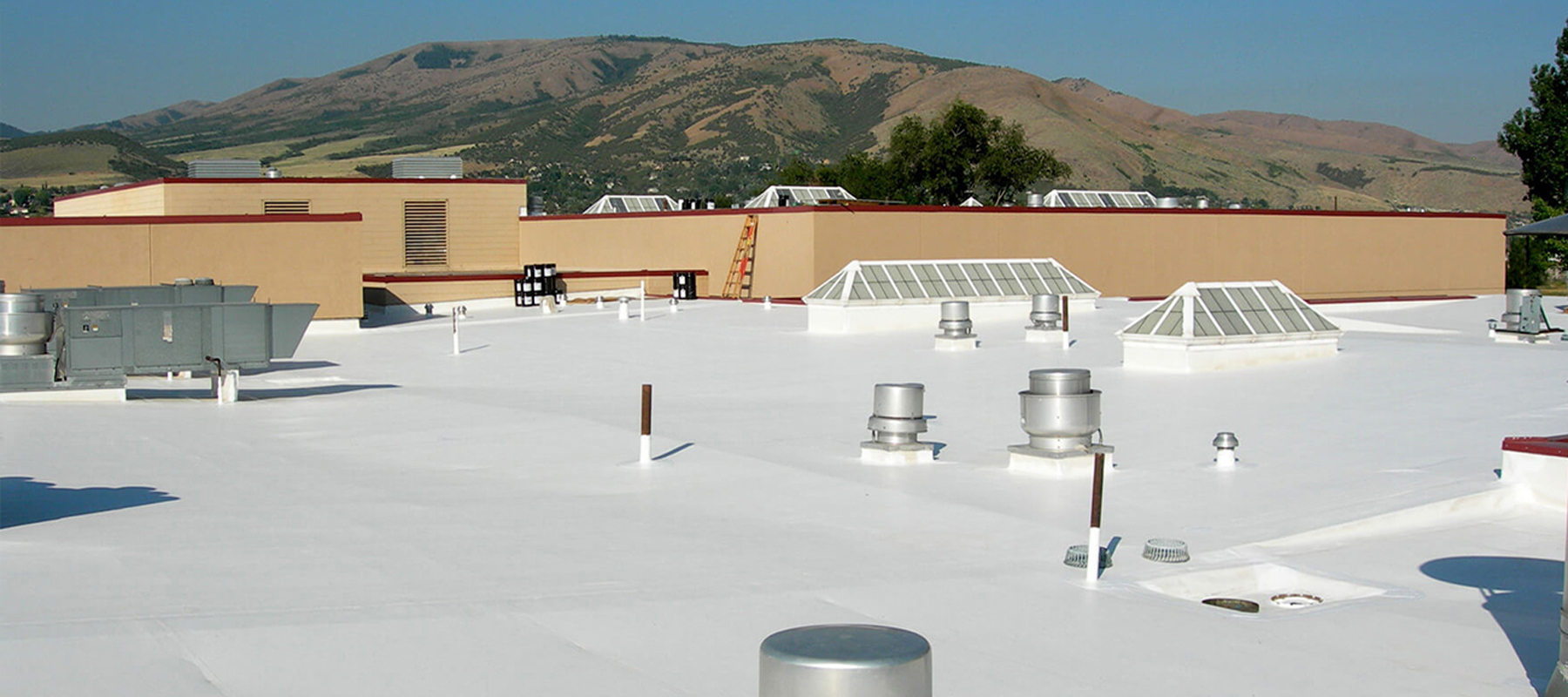CSPE Rubber Roof Prices From Start to Finish: Materials & Labor
Last Updated: December 05, 2023

Fact Checked By: Ryan Maguire
On This Page
Chlorosulfonated Polyethylene (CSPE) is a type of synthetic rubber used for flat and low-slope roofing.
CSPE roofing is sometimes referred to as Hypalon, the trademark for a CSPE manufactured by DuPont. DuPont was the first company to manufacture CSPE, and Hypalon is a common name for CSPE roofing membranes despite the fact that DuPont no longer manufacturers Hypalon roofing.
Other companies do still manufacture CSPE resin, however, which is fortunate, because it is one of the best single-ply roofing membranes available today. To learn more about CSPE roofing and how much it costs to install, continue reading.
CSPE Roofing Average Costs #
- CSPE roofing costs $2.50 to $4.50 per square foot, assuming that the original roof does not need to be removed and disposed of. If it does, the total cost might increase to $4.00 to $7.00 per square foot. Assuming a typical roof size of 1,500 square feet, you're looking at a total installed cost of approximately $4,000 to $11,000.
- Adding a cool roof coating, sprayed or rolled on paint-like materials that improves roofing durability and solar reflectance, costs around $1 per square foot (or $1,500 for the entire roof).
Real Life CSPE Rubber Roofing Installation Costs #
"I needed to replace the failing roof on my small commercial warehouse. I had a contractor install a new 60mil white CSPE rubber roof membrane for $4.25 per sq ft and a total job cost of $21,250 for the 5,000 sq ft roof." - Mark S.
"We used Firestone rubber roofing for our low slope concession stand roof at the stadium. For the basic 45mil gray membrane and flashing around vents, our final price was $2.75 per sq ft installed. At 2,500 sq ft, our total rubber roof expense was $6,875." - Olivia P.
"For our medical office building, I wanted a durable rubber roof solution that would hold up for decades. We chose a 90mil white reinforced CSPE membrane installed over the existing roof for $7 per sq ft and a total job cost of $42,000 covering 6,000 sq ft." - Robert G.
"Our manufacturing plant requires a reliable leak-proof roof able to withstand chemicals and exhaust. We used thick 80mil black reinforced CSPE rubber for $6 per sq ft installed. Our total 15,000 sq ft rubber roof cost was $90,000." - Ashley W.
As shown in these quotes, installed CSPE rubber roofing costs ranged $3 - $7 per sq ft based on product thickness/reinforcing, buildings uses, locations and complexity.
CSPE Roofing Considerations #
When installing CSPE rubber roofing membrane on your home, keep the following considerations in mind:
- Thickness: CSPE single-ply rubber roofing is typically sold in thicknesses of 36, 45, and 60 millimeters, although it's possible to special order thicker membranes.
- Color: Available colors for CSPE flat roofing are black, white, and gray. Note that white and light-gray roofing can help you to drastically reduce cooling costs by deflecting heat and light.
- Installation Method: A CSPE rubber roof can be mechanically attached, fully adhered, or ballasted.
The Benefits of CSPE Roofing #
CSPE rubber roof membranes are some of the best you can buy for reasons that include the following:
- Seamless: Individual panels or sheets of CSPE roofing are either hot air welded or vulcanized with special adhesive solvents. Whichever method is used, the result is the same: the individual polymer components cross-link to form a single, highly stable, strong, and tough rubber roofing membrane.
- Protection: A CSPE rubber roof provides excellent protection against UV and Ozone exposure, organic and inorganic chemicals, fire, and all types of weather. It even retains flexibility in freezing and thawing conditions.
- Variety of Uses: CSPE is not only an excellent flat roofing material for your home roof, but can also be used on shed roofing, dormers, chimney crickets, and to reline old fashioned tin box gutters.
- Long-Term Value: Rubber membranes are not the cheapest flat roofing material, but when you consider that CSPE roofs often come with a warranty of 20 to 30 years, are much less prone to failure than a traditional built up roof, and can slash your energy bills, it's clear that installation cost doesn't tell the whole pricing story.
Resources:
